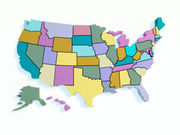Widest gap between county-level opioid use disorder, estimated capacity for treatment is in Southeast
TUESDAY, April 4, 2017 (HealthDay News) — There is geographic variation in treatment admissions among opioid treatment programs that accept Medicaid, according to a study published online March 27 in Health Services Research.
Amanda J. Abraham, Ph.D., from the University of Georgia in Athens, and colleagues used data from the 2012 National Survey of Substance Abuse Treatment Services to examine county-level geographic variation in treatment admissions among opioid treatment programs that accept Medicaid.
The researchers identified several clusters of counties that had higher-than-average rates of opioid use disorder (OUD) and lower-than-average treatment admissions among outpatient treatment programs (OTPs). The clusters were concentrated in the Southeast and included Arkansas, Kentucky, Louisiana, Mississippi, and Tennessee.
“Medicaid enrollees in areas in the Southeast have the largest gaps between county-level OUD rates and estimated county-level capacity for treatment, as measured by county-level total treatment admissions among OTPs that accept Medicaid,” the authors write. “Policy makers should consider strategies to increase the availability of OTPs with the capacity to serve Medicaid enrollees.”
Copyright © 2017 HealthDay. All rights reserved.








